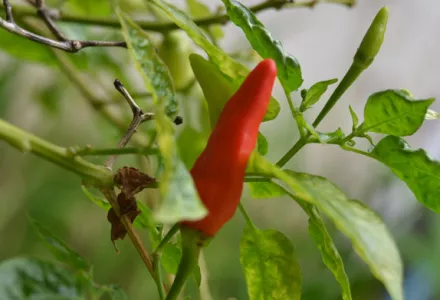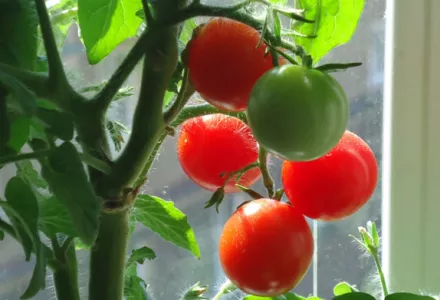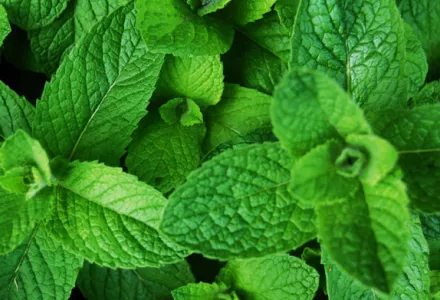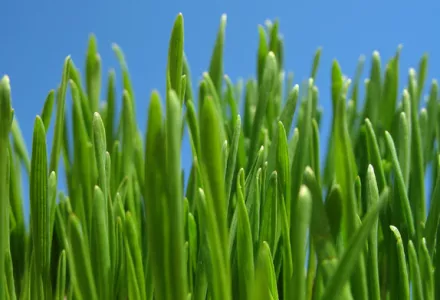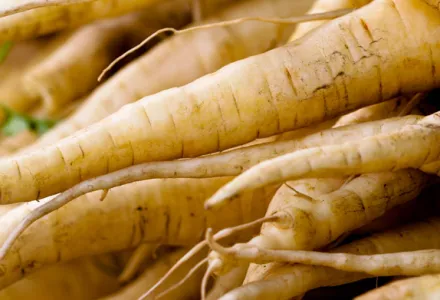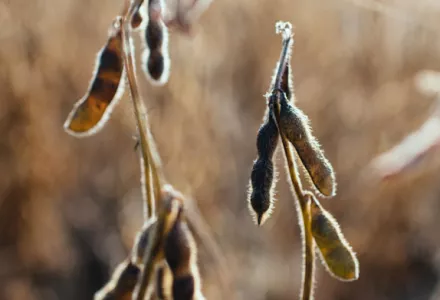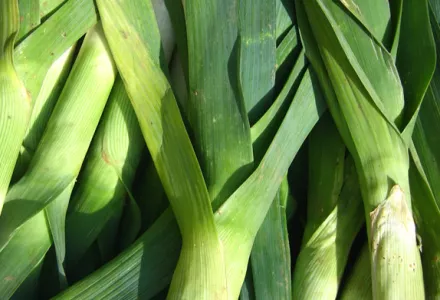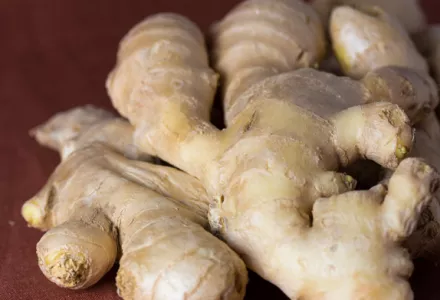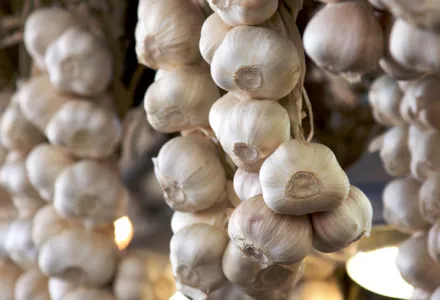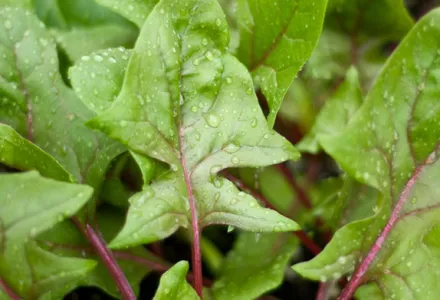Eaten and enjoyed all around the world, the cucumber can probably lay claim to the title of ‘king of cool’. The Steve McQueen of the salad world. But as slender and succulent as the cucumber might be, it has never quite been able to shake off the associations of its – frankly – phallic form. It’s probably an association the cucumber can live with, though. Nothing is a problem when you’re as cool as a cucumber.
Part of the melon family
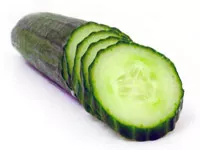
The most well-known cucumber is the long, dark green, smooth-skinned variety, Cucumis sativus, which we find in most grocery stores. But cucumbers actually come in a wide variety of colours, sizes, shapes and textures. You can find white, yellow, and even orange-coloured cucumbers and they can also be short, slightly oval, or even spherical in shape. Their skin can be smooth and thin, or thick and rough. But all these shapes and sizes of cucumber belong to the botanical plant family called Curcubitaceae, a large family that includes melons and squashes.
How to grow cucumbers? Grow it yourself!
Cucumber plants naturally thrive in both temperate and tropical environments, and generally require temperatures between 15 and 33°C. This means they are native to many regions of the world.
How to plant cucumbers?
For the best-tasting fruit and optimum yields, grow plants in a sunny spot and in warm, fertile, and well-drained soil that is rich in organic matter. Raised beds are ideal. Cucumbers require a soil pH between 6.0 and 7.0. Seeds should be sown or transplants set out only when all risk of frost has passed and the soil has warmed to at least 15°C. An unexpected frost will kill your plants, and the vines will grow slowly and suffer from more stress in cooler conditions. You can start seeds indoors three to four weeks before your anticipated planting date outside. Be careful not to disturb the roots when transplanting.
Did you know that ultimately, temperature will also affect the size and quality of your crop? This video explains why temperature is so crucial if you want your plants to grow and develop to their full potential.
Fertilize cucumbers
Cucumbers thrive in light, friable soil. Several centimeters of organic matter worked into the soil prior to planting will help achieve that goal. The cucumber plants are heavy feeders, so be sure to feed the soil with rich compost or aged manure. After the vines have developed runners and the first flowers have appeared, follow up with a side dressing of compost, aged manure, or organic fertilizer. If the leaves become yellowish, the plants need more nitrogen. Make plenty of room. Giving your plants the space they need is also essential if you want them to thrive. Grow trellised plants 15 to 18 centimeters apart. Hills with one or two seedlings should be spaced about 1 meter apart, with the rows 1 to 1.5 meter apart.
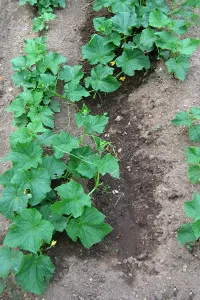
Cucumbers are thirsty
Keep your plants well watered, especially around the time the plant is flowering and fruiting. Any water stress during this period of rapid growth will cause an increase in the amount of bitter-tasting compounds in your fruit. Cucumbers are vigorous growers and therefore need a lot of water per week, depending on the weather and the characteristics of your soil. The key is to keep the soil slightly moist at all times. You should water deeply about once or twice a week, or more often if you’re gardening in sandy soil.
More information about water in general?
Mulchy mulch
You can further reduce water stress by mulching plants with an organic mulch. Mulch helps to conserve and moderate moisture levels and also blocks out weeds. Plastic mulches can be applied at planting time, but wait until summer or after the soil has warmed to above 21°C before applying organic mulches, such as straw.
Self-regulating moral
Cucumber vines will self-regulate the number of fruits they carry at a time. To maximize production, harvest fruits as soon as they reach picking size. Pick them daily, because under ideal conditions, cucumber fruits can actually double in size in just one day. Use scissors or small shears to snip off fruits with a short stub of stem attached. Lightly scrub, pat dry and refrigerate harvested cucumbers right away.
Did you know?
In ancient Rome wives, who wished for children, wore cucumbers around their waist. Maybe the idea was that the sight of the vegetable might inspire their spouse to achieve great things in the bedroom. The cucumber has been one of mankind’s edible companions since the beginning of time, it seems. Originating in India, it spread quickly all over the world. Cucumbers are mentioned in the legend of Gilgamesh – an Uruk king who lived around the year 2,500 BC in what is now Iraq and Kuwait. And approximately 3,300 years later, cucumber cultivation spread to parts of Europe. In 900 AD the existence of this vegetable (which is actually fruit) was first recorded in France, where Charlemagne grew it in his garden. It was not until the time of the European colonists that cucumbers finally appeared in North America in the 1,500s.
Crunchy pickled cucumbers
While there are literally hundreds of different varieties of Cucumis sativus, virtually all of them can be divided into two basic types:
- cucumbers for slicing;
- cucumbers for pickling.
Slicing cucumbers include all the varieties that are cultivated for immediate consumption while they are still fresh. These varieties tend to be fairly large, with thicker skin. Their size makes them easier to slice, and their thick skin means they can be transported easily.
Types of pickles
There are two basic types of pickles: fermented and non- fermented.
- Fermentation is the process of allowing the fresh cucumbers to soak in a solution – typically brine, water that has a very high salt content. In fact, the word ‘pickle’ actually comes from the Dutch word ‘pekel’, meaning brine. As well as salt, pickling brines often contain other ingredients, including vinegar, dill seed, garlic, or lime.
- Non-fermented pickles rely on the addition of vinegar or some other acidic solution to prevent spoilage. ‘Quick pickling’, using just vinegar, can be accomplished in a matter of days. Pickling by fermentation usually takes a minimum of a few weeks.
Popular veggie
After tomatoes, cabbages and onions, cucumbers are the fourth most widely cultivated vegetable in the world. They are enjoyed on every continent and you will find them used in all types of cuisine. The world produces approximately 42 billion kilograms of cucumbers every year.
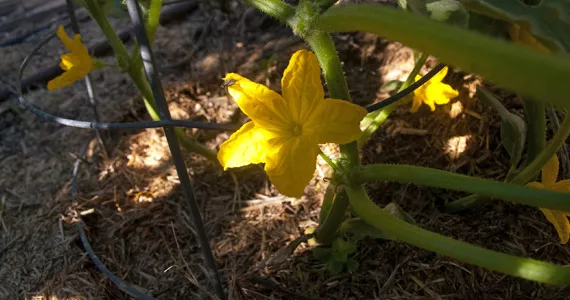
Health benefits
Maybe cucumbers have not received as much press as other vegetables in terms of their health benefits, but this widely cultivated vegetable does in fact provide us with a unique combination of nutrients. Cucumbers have valuable antioxidant, anti-inflammatory, and anti-cancer benefits. They are a valuable source of conventional antioxidant nutrients including vitamin C, beta-carotene, and manganese. In addition, cucumbers contain numerous flavonoid antioxidants, including quercetin, apigenin, luteolin, and kaempferol.
Cucumbers are also an excellent source of anti-inflammatory vitamin K and the enzyme-cofactor molybdenum. They contain plenty of free radical-scavenging vitamin C, and potassium and magnesium which are essential for cardiac health. They give you bone-building manganese, energy- producing vitamin B5 and the silicon which is vital for the health of your nails.
How to grow cucumbers - Tips
- Use a trellis, such as a wire tomato cage, to increase the leaf-to-fruit ratio of your cucumbers. This will increase your yield of flawless, flavourful fruits and make them easier to pick.
- To further increase your yields, mulch beneath the cucumbers with organic material.
- Make two plantings a month apart to extend your harvesting season, and try to plant different varieties. If you experience super-hot summers, grow a second crop in early fall, using row covers.
- If you’re planning crop rotations, note that cucumbers often do well following cabbage-family crops.

